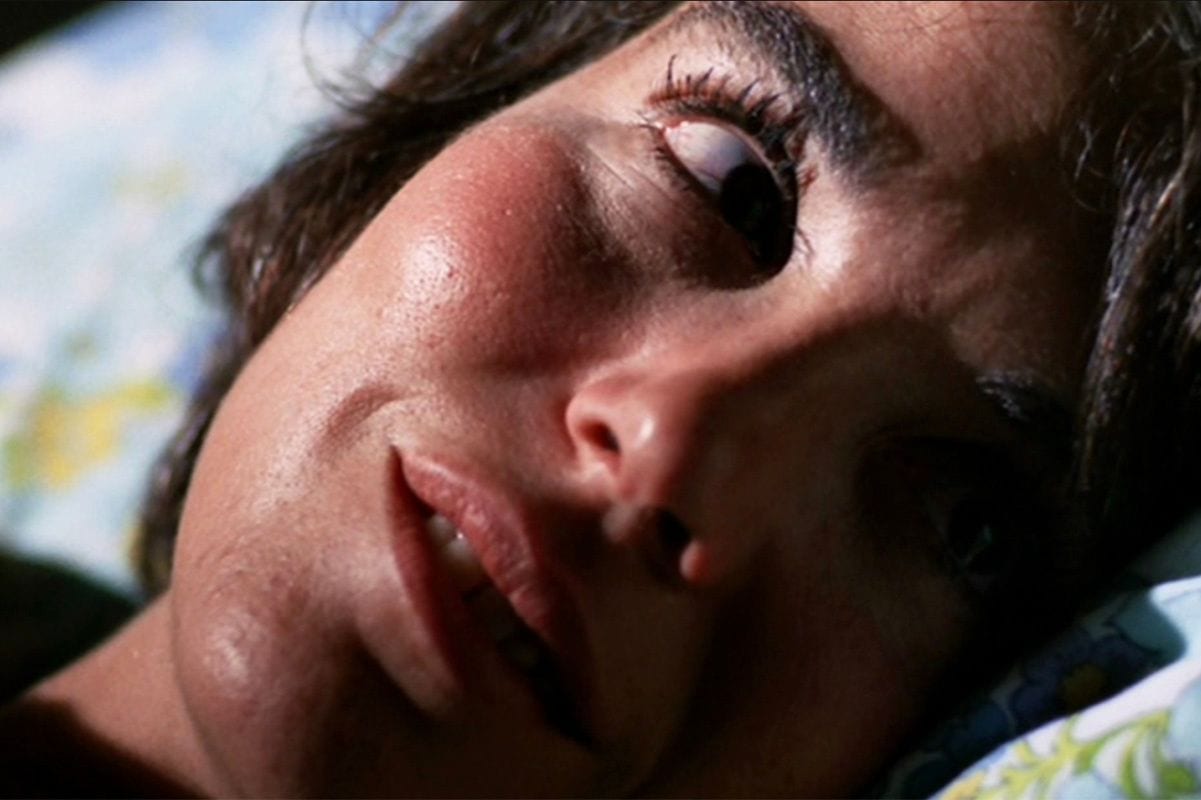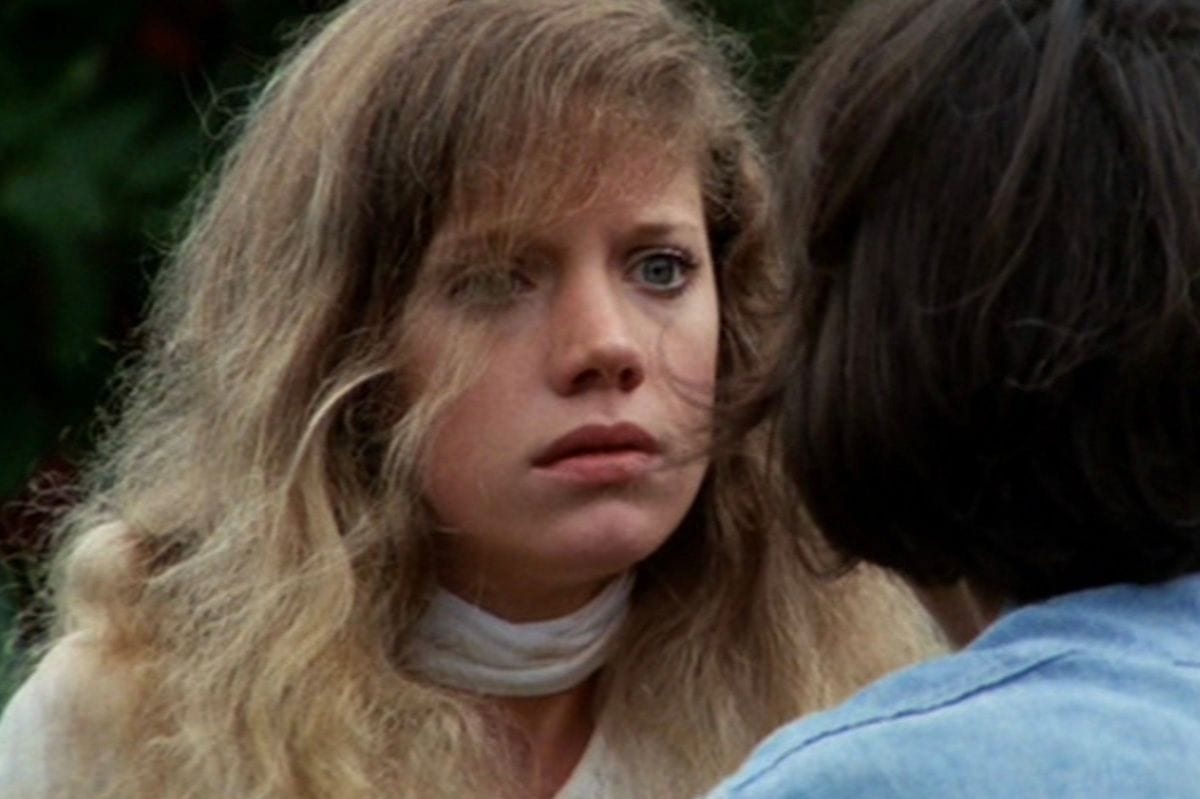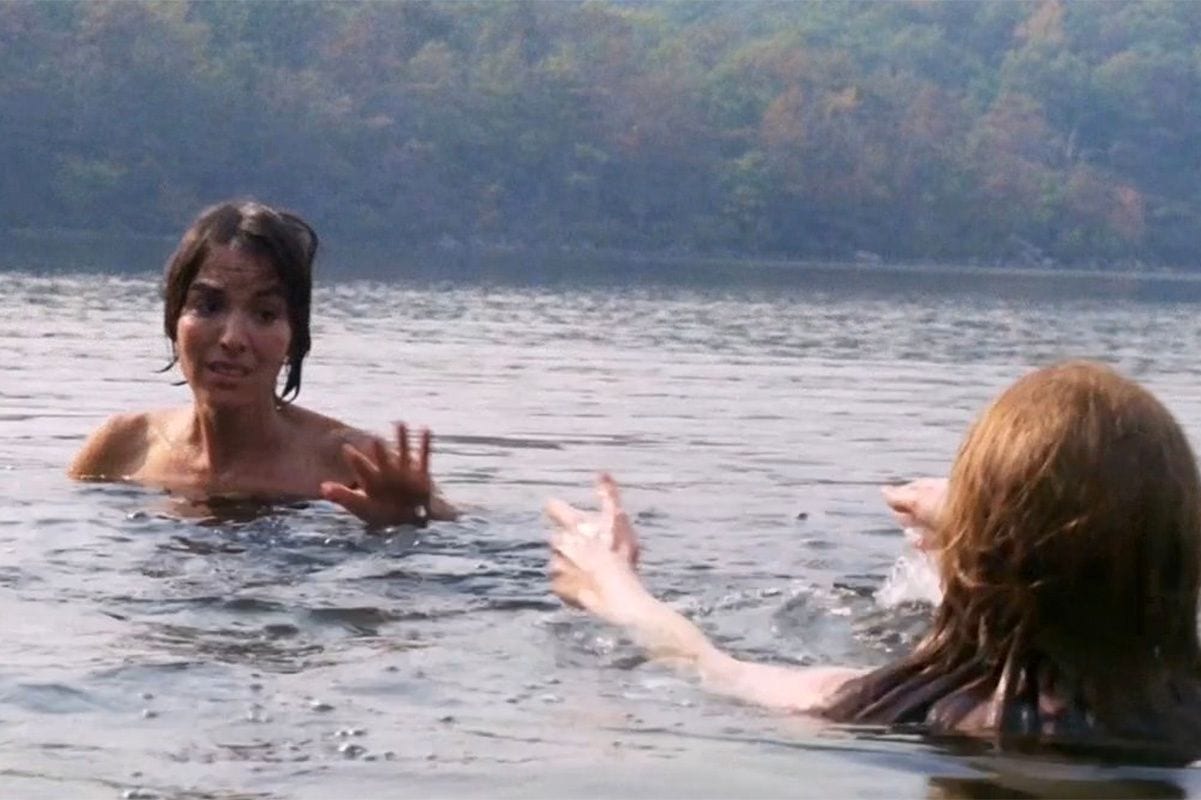
Following the success of Henri Georges Clouzot’s Diabolique (1956), an entire subgenre emerged featuring similar plots with increasingly unsurprising surprise endings. These films had titles like Taste of Fear (Seth Holt, 1961), Die Die My Darling! (Silvio Narizzano, 1965), Whatever Happened to Baby Jane (Robert Aldrich, 1962), Hush Hush Sweet Charlotte (Aldrich, 1964) and even Who Slew Auntie Roo (Curtis Harrington, 1971). Judging from the title alone, Let’s Scare Jessica to Death seems like just another one of these films and for a large part of the running time the film employs the tropes of this subgenre with ruthless precision.
Jessica (Zohra Lampert) is cut from the same cloth as the heroines of these thrillers. All of which depend on a female lead whose sanity is unreliable. Whether or not the result of trauma, the women in most of these films have a fragile grip on reality and the story is presented primarily from her possibly unreliable point of view. Like her generic counterparts, Jessica is made to question her sanity when she witnesses unreal and possibly supernatural events happening around her. At first, she keeps these impressions to herself for fear that others will think she has lost her mind again.
As usual, the mysterious and shocking encounters increase in number until the female lead is pushed over the edge into a complete mental breakdown. Most of the films in this subgenre will then reveal that what we’ve been watching has really been a carefully orchestrated Scooby-Doo-like plot to drive the lead character insane. There’s nothing supernatural or hallucinatory at all going on — just a ludicrously perfect series of staged incidents designed for an audience of one. Well, for some of us in the audience too, if we are easily fooled. This is where Let’s Scare Jessica to Death fools everyone. It’s not one of those movies at all. It’s actually about the fragile grip on reality itself.
Let’s Scare Jessica to Death opens and closes on the same image: a placid shot of Jessica sitting in a small rowboat on a beautiful lake. She narrates the film and we often hear her thoughts throughout. We experience this story with her and even when the film presents scenes where she is not present, they appear to be moments she could be imagining. The film is Jessica’s version of what happened.
Gretchen Corbett and Zohra Lampert (IMDB)
What happened to Jessica, her husband Duncan (Barton Heyman) and their friend Woody (Kevin O’Connor) at their farmhouse in upstate New York cannot truly be known. Almost all of it may be Jessica’s paranoid fantasy. The mysterious girl in white (Gretchen Corbett) that she first encounters in the graveyard is merely a hallucination — even when she turns out to be real. Or does she turn out to be real? The drifter Emily (Mariclare Costello) wasn’t really a century-old vampire — just Jessica taking a local legend and letting her imagination run wild. But as author Joseph Heller said, “Just because you’re paranoid doesn’t mean they aren’t after you.”
Writer-Director John Hancock and co-writer Lee Kalcheim appear to be very aware of these familiar genre tropes. They take the gothic heroine from hundreds of penny dreadfuls and allow her to have her agency. Like her generic archetypes, Jessica is treated as a child initially. But she does not stand for that. She pushes back at the others even as she questions herself. It is Jessica who decides to let Emily stay with them. Even though she suspects her husband is attracted to her. She may be mad and Jessica herself may be the threat in the story. Maybe Jessica kills her innocent friends out of fear. The film only takes her side but it’s the brilliance of the filmmaking and Zohra Lampert’s amazing performance that makes us both believe and question her version of the events.
Shout! Factory’s Blu-ray release of this film is another fantastic addition to their ever-growing library of cult classics and it leaves Paramount’s previous bare-bones budget DVD in the dust. It’s a very clean 1080p HD transfer in proper 1:85:1 aspect ratio. But not so clean that it loses the wonderful film grain of the original prints. It still looks like a film made in 1971, as it should. There’s an English DTS-HD Master Audio 2.0 track and optional English subtitles provided.
As usual with Shout! Factory there is a wealth of great extra features. Along with the original theatrical trailer, TV spot, radio spot and image gallery, there are several short interviews. “Art Saved My Life” is an interview with composer Orville Stoeber, who discusses how he synth-scored the film and how Hancock helped him to create a unique sound by layering pretty and melancholic tracks with more sinister electronic sounds to create tension within the score.
(© Paramount Pictures / IMDB)
“Scare Tactics: Reflections on a Seventies Horror Classic” is an interview with author/film historian Kim Newman. Let’s Scare Jessica to Death is his favorite horror film and he discusses how it shocked him when he first saw it as a teenager because it was so different from the horror fare he was used to seeing in the cinema.
“She Walks These Hills – The Film’s Locations Then and Now” is kind of like a YouTube fan video but it’s interesting to see how little has changed over the years. Except to the Bishop house, which sadly appears to be falling apart now.
But the best extra is the new audio commentary with director John Hancock and producer Bill Badalato. This is a very detailed discussion of the making of the film and the specific choices that were made to create a unique horror film. Hancock talks about bringing his theater background to the filmmaking process and his close relationship with the cast, most of whom worked with him earlier on stage. There’s also a great debate between Hancock and Badalato about a “mole” that appears in the film. A mole that’s played by a mouse because the mole died.
Let’s Scare Jessica to Death is an incredibly creepy, dream-like film. The kind that’s best watched around 2AM, when you are half asleep and the film’s mood can slip into your subconscious. You’ll wake up in the morning and wonder if you dreamt the entire thing.



